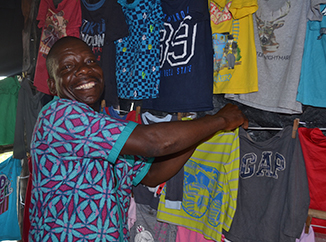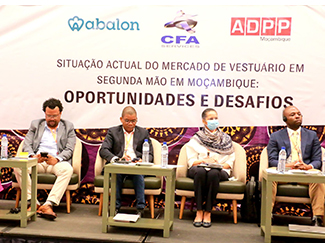consent_cookie
Duración: 1 year
Stores the user's cookie consent state
20-03-2025
80% of Mozambique's population buys second-hand clothes, a sector that provides employment for 288,000 people. This is what is revealed in a study on the current state of the second-hand clothing market in Mozambique, presented this morning by our partners at ADPP Mozambique.
The report ‘Current situation of the second-hand clothing market in Mozambique: opportunities and challenges’ determines that this sector is immensely important for the African country:
The report estimates that over the past five years, Mozambique has imported some 36,750 tonnes of used clothing per year. No data is available on the main countries exporting to the African country, but they are distributed among Europe, the United States, Australia, the United Arab Emirates, Pakistan, South Korea and China. Demand has grown by 3.5% in the last year.
The field study suggests that damaging the second-hand clothing industry would directly jeopardise the livelihoods of millions of people.
On the other hand, the government also benefits directly from taxing imports. Conservative estimates suggest at least $35 million a year in tax revenue related to this sector. ‘This helps fund many health and education programmes,’ says the report, which ranks the sector among the country's top ten taxpayers.
The study indicates that there is no evidence that used clothing contributes to textile landfills, but that it prolongs the life of garments and reduces waste. This confirms the views of development experts that the culture is not one of throwing clothes away, on the contrary: they are often passed on from person to person or converted into other types of garments. This is why there are also many tailors in the local markets serving the vendors, repairing, altering and extending the life of the clothes.

